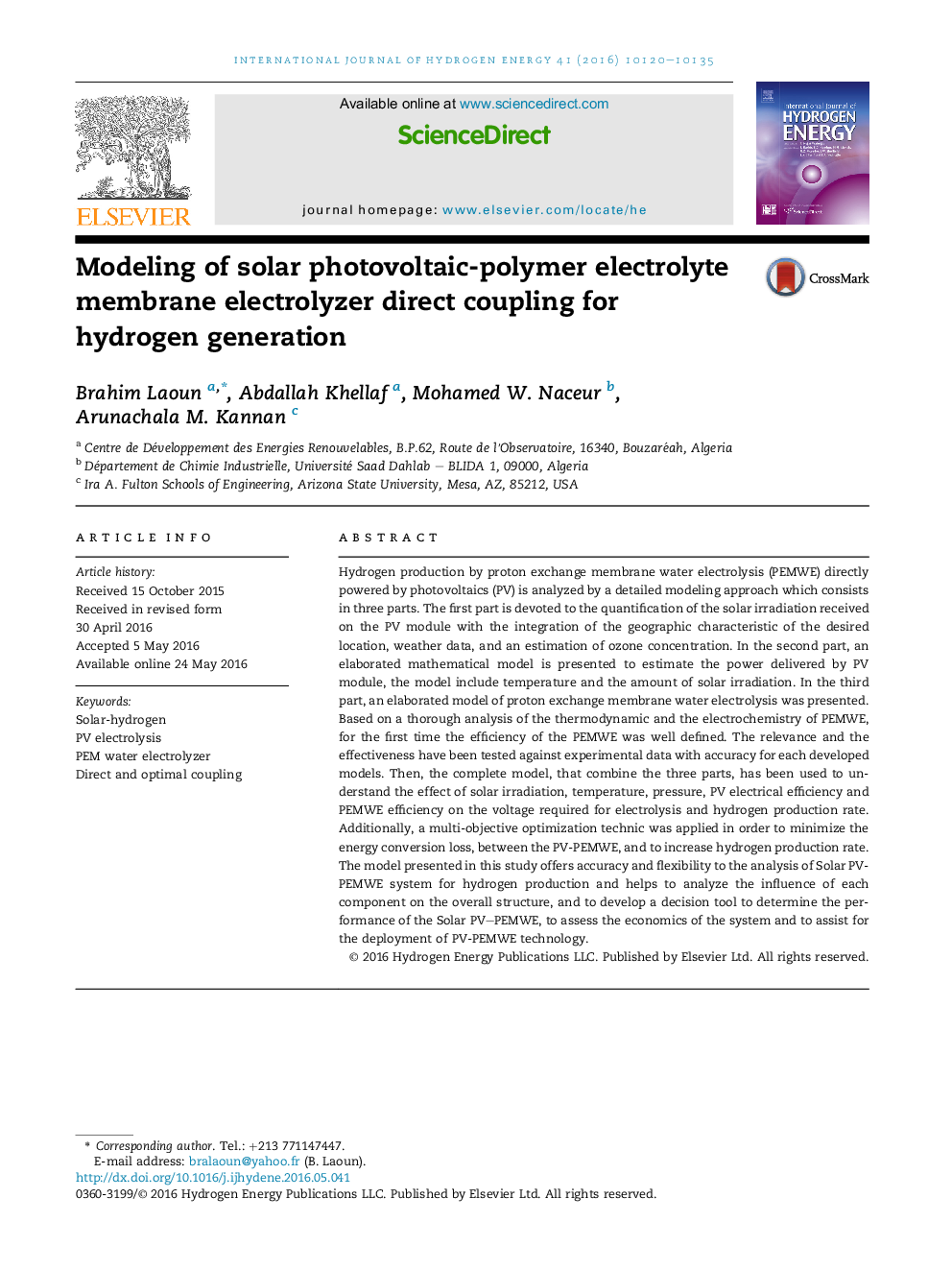| Article ID | Journal | Published Year | Pages | File Type |
|---|---|---|---|---|
| 1269744 | International Journal of Hydrogen Energy | 2016 | 16 Pages |
•A complete elaborated solar irradiation model is proposed for the first time with integration of ozone concentration.•Elaborated mathematical model is presented to estimate the PV module power delivery.•Flexible multi-objective optimization technique was developed to improve PV-PEMWE efficiency.
Hydrogen production by proton exchange membrane water electrolysis (PEMWE) directly powered by photovoltaics (PV) is analyzed by a detailed modeling approach which consists in three parts. The first part is devoted to the quantification of the solar irradiation received on the PV module with the integration of the geographic characteristic of the desired location, weather data, and an estimation of ozone concentration. In the second part, an elaborated mathematical model is presented to estimate the power delivered by PV module, the model include temperature and the amount of solar irradiation. In the third part, an elaborated model of proton exchange membrane water electrolysis was presented. Based on a thorough analysis of the thermodynamic and the electrochemistry of PEMWE, for the first time the efficiency of the PEMWE was well defined. The relevance and the effectiveness have been tested against experimental data with accuracy for each developed models. Then, the complete model, that combine the three parts, has been used to understand the effect of solar irradiation, temperature, pressure, PV electrical efficiency and PEMWE efficiency on the voltage required for electrolysis and hydrogen production rate. Additionally, a multi-objective optimization technic was applied in order to minimize the energy conversion loss, between the PV-PEMWE, and to increase hydrogen production rate. The model presented in this study offers accuracy and flexibility to the analysis of Solar PV- PEMWE system for hydrogen production and helps to analyze the influence of each component on the overall structure, and to develop a decision tool to determine the performance of the Solar PV–PEMWE, to assess the economics of the system and to assist for the deployment of PV-PEMWE technology.
